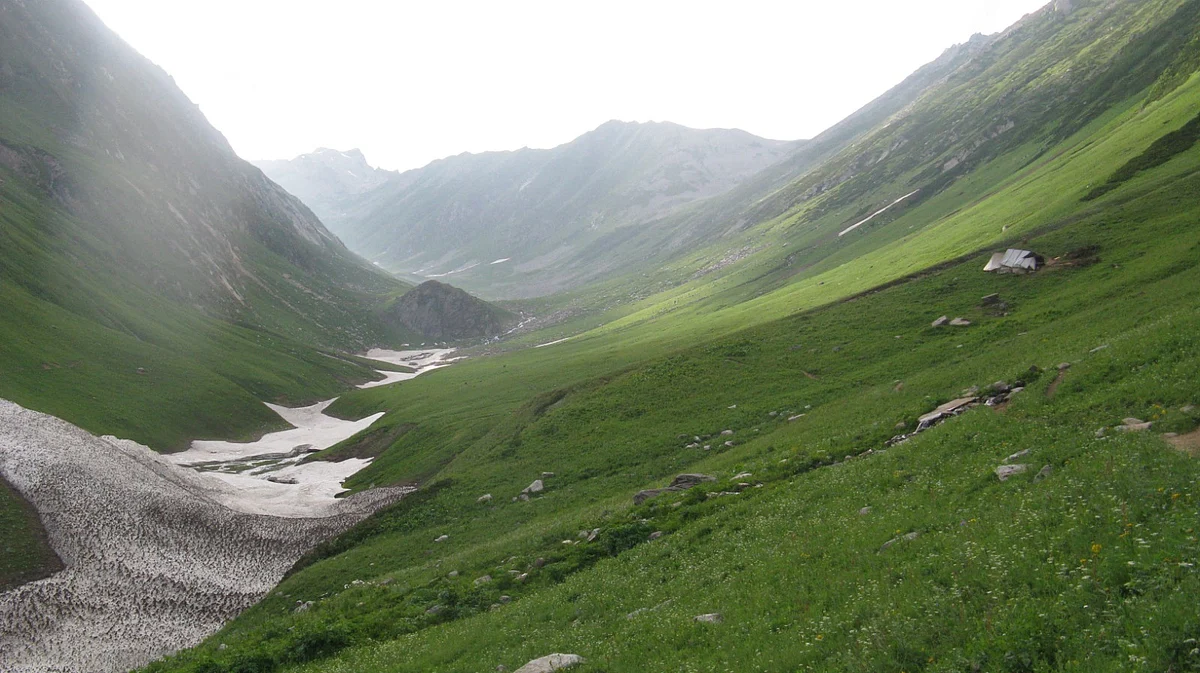

MUZAFFARABAD: More than six months after Pakistan’s Ministry of Climate Change and Environmental Coordination informed the Pakistan-administered Kashmir government of its inclusion in a $10 million Green Climate Financing (GCF)-funded project, the Pakistan-administered Kashmir government has yet to submit its proposal, according to officials privy to the situation.
The Deputy Director of Climate Change at the Environmental Protection Agency (EPA) in Pakistan-administered Kashmir Sardar Muhammad Rafique Khan told Kashmir Times that the proposal is currently being evaluated by the Planning and Development Department of Azad Kashmir and may be submitted soon. He added that the inclusion of Pakistan-administered Kashmir in GCF funding is a breakthrough.
On February 11, 2025, during a meeting chaired by the Secretary of the Ministry of Climate Change and Environmental Coordination (MoCC&EC) in Islamabad, officials from Pakistan-administered Kashmir were formally informed of their inclusion in GCF-funded projects worth $10 million for the year.
PaJK's Access to Green Climate Fund
This marks the first time that Pakistan-administered Kashmir has been granted access to Green Climate Fund (GCF) financing since the Fund’s establishment in 2010 under the Cancún Agreements.
The GCF, a dedicated financing mechanism for developing countries within the global climate framework, serves as the financial mechanism for both the United Nations Framework Convention on Climate Change (UNFCCC) and the Paris Agreement.
Pakistan-administered Kashmir’s access to GCF funds represents a landmark development, signaling the beginning of efforts to combat climate change in a region where such action has previously been negligible due to a lack of initiative and limited resources.
Since neither Pakistan-administered Kashmir nor any of its departments is an accredited entity with the GCF, proposals must be submitted through an accredited organization or institution to access funding.
According to Sardar Muhammad Rafique Khan, the proposal is currently under process. Pakistan-administered Kashmir faced significant barriers in accessing international climate finance. Documents reveal that in 2019, the GCF denied funding to AJK, citing its disputed status as the primary reason.
According to the documents, the AJK government had submitted a $37 million proposal in 2018 for the “development of a climate change-resilient natural resource base to support the livelihood of vulnerable communities in upland watersheds,” through the International Union for Conservation of Nature (IUCN), an accredited entity with the GCF.
However, officials admit that the GCF rejected the proposal due to the disputed status of Pakistan-administered Kashmir.
Climate Financing in PaJK
The question remains: Can foreign financing alone truly address the climate crisis in Pakistan-administered Kashmir? Experts have noted that while access to Green Climate Fund (GCF) resources is an important step, it is not sufficient on its own. The institutional framework to tackle climate change in Pakistan-administered Kashmir must be significantly strengthened.
Sardar Muhammad Rafique Khan stated, “Financial support from international climate funds, such as the Green Climate Fund (GCF), is essential. However, for Pakistan-administered Kashmir to fully benefit from such funding, it must strengthen its institutional capacity and secure accreditation with climate finance mechanisms.”
Amid access to Green Climate Financing, the environmental crisis continues to escalate, and the impact of climate change is already evident.
Experts have warned that the glaciers of Pakistan-administered Kashmir, found exclusively in Neelum Valley, have been retreating at an alarming rate over the past two decades. They attribute this glacier melt primarily to rising temperatures, deforestation, global warming, shifting weather patterns, and human activity.
Neelum Valley, renowned for its stunning snow-capped mountains, meadows, lakes, and rivers, is grappling with these unprecedented environmental challenges.
The retreat of its glaciers has far-reaching effects on local ecosystems, water resources, and agriculture, according to environmental experts. They added that local communities—heavily reliant on forests for fuelwood and engaged in timber smuggling—have further contributed to the problem by cutting down trees at an unsustainable rate.
Glaciers Retreating Fast in Neelum Valley
According to a paper by Sardar Muhammad Rafique Khan, Deputy Director of Climate Change at the Environmental Protection Agency, titled “Impacts of Climate Change on the Water Resources of Azad Jammu & Kashmir, Kashmir Himalaya,” published in the Journal of Earth Science & Climatic Change for the 8th International Conference on Environment and Climate Change, the total glacier area in 2000 was 15,110 hectares.
By 2010, this had decreased to 13,520 hectares—a loss of 1,590 hectares over ten years, which, as stated in the paper, equates to 159 hectares lost per year. The paper further reports that from 2010 to 2017, the glacier area decreased to 11,350 hectares, resulting in a loss of 2,170 hectares over just seven years, or 309 hectares annually.
Overall, the glacier area decreased by approximately 24.9% from 2000 to 2017, with an average annual loss of 220 hectares during that period. Although no updated studies are available after 2017, it is assumed that the glaciers have continued to melt at an even faster rate.
If glaciers continued to melt at a rate of 309 hectares per year since 2017, by 2024, the total loss would reach approximately 5,923 hectares—accounting for a 39.2% reduction in glacier area. If this rate persists, the glaciers could disappear entirely in about 30 more years, by around 2054.
Have you liked the news article?